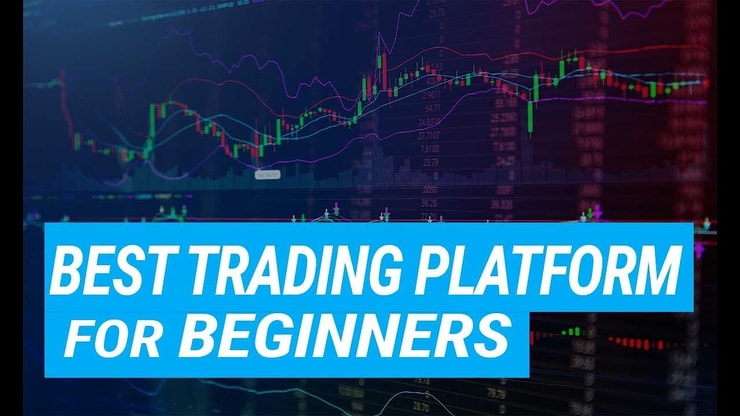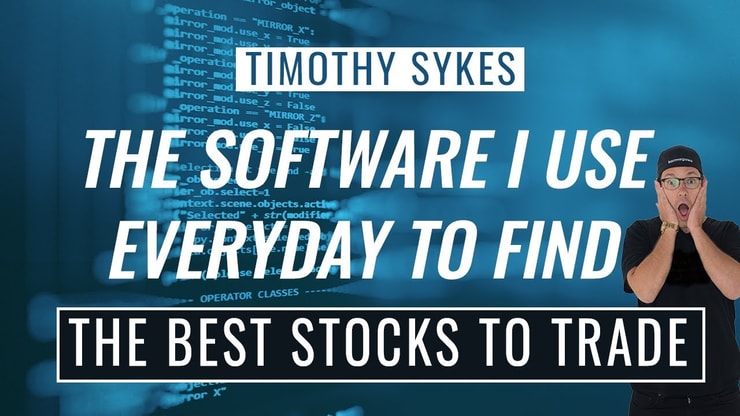Trading simulators in Canada give you a way to practice trading in real market conditions — without putting real money on the line. Whether you’re into stocks, options, commodities, or forex, these virtual platforms let you sharpen your strategy and build confidence before you risk a single dollar. For new traders, it’s one of the smartest ways to prepare for the realities of the market.
You should read the article because it equips you with the know-how to select and utilize the top trading simulators in Canada, enhancing your trading skills without financial risk.
I’ll answer the following questions:
- What are trading simulators?
- Why should I use a stock market simulator?
- What are the disadvantages of using trading simulators?
- How can I use a trading simulator effectively?
- What should I look for when choosing a Canadian trading simulator?
- Are there any limitations to using a trading simulator?
- How close is a simulator experience to real trading?
- Can I simulate trading for assets other than stocks?
Let’s get to the content!
Table of Contents
- 1 What Are Trading Simulators?
- 2 Why Should I Use a Stock Market Simulator?
- 3 Disadvantages of Using Trading Simulators
- 4 Top Trading Simulators Available in Canada
- 5 How To Use a Trading Simulator Effectively
- 6 How To Choose a Canadian Trading Simulator
- 6.1 Determine Your Goals
- 6.2 Real-Time Data Availability
- 6.3 Range of Tradable Instruments
- 6.4 User-Friendly Interface
- 6.5 Research and Analysis Tools
- 6.6 Broker Integration
- 6.7 Feedback and Reporting
- 6.8 Customizability
- 6.9 Mobile Compatibility
- 6.10 Community and Support
- 6.11 Cost
- 6.12 Reviews and Reputation
- 6.13 Duration of the Simulation
- 6.14 Educational Resources
- 6.15 Regular Updates
- 7 Key Takeaways
- 8 Frequently Asked Questions
- 8.1 Are there any limitations to using a trading simulator?
- 8.2 How close is a simulator experience to real trading?
- 8.3 Can I simulate trading for assets other than stocks?
- 8.4 What should you consider when choosing a trading simulator in Canada?
- 8.5 Are there any free trading simulators available in Canada?
- 8.6 Can you access Canadian trading simulators on mobile devices like Apple?
What Are Trading Simulators?
Trading simulators, often referred to as stock trading apps or paper trading platforms, are tools designed for investing without the risk. They replicate the real-world market conditions, allowing users to practice trading stocks, currencies, and other financial instruments using virtual cash. These simulators are integral in the world of finance education, providing a practical learning experience for students, friends, and partners interested in the markets. They offer a sandbox for testing investment strategies, understanding market movements, and getting a feel for handling a portfolio worth, say, $1 million in virtual currency. Brokerages and financial companies often provide these simulators as part of their online services, allowing users to engage with the stock market without the fear of losing everything — or anything, for that matter.
Understanding the Concept of Stock Market Simulators
Stock market simulators are like the flight simulators for traders. They mimic the pulse of the trading world, from the rush of buying and selling shares to the analysis of complex securities. These platforms are not just games; they are sophisticated educational resources that use real market data to help investors practice trades and develop strategies. They offer a risk-free environment to understand market mechanisms, including ETFs, commodities, and cryptocurrencies.
Differences Between Trading Simulators and Real Trading Platforms
While trading simulators mirror the stock market’s movements, they lack the emotional intensity of real trading where actual funds are at stake. Simulators may offer a plethora of trading options and the thrill of seeing your portfolio’s value fluctuate, but they can’t replicate the pressure of making decisions with real money. This is where the rubber meets the road for traders, distinguishing between a simulated environment and the real-world markets where factors like commission fees and order execution times come into play.
Why Should I Use a Stock Market Simulator?
A stock market simulator gives you room to make mistakes — without blowing up your real account. It’s where you test strategies, learn the platform, and build discipline. Too many traders jump into live markets unprepared. Simulators help you avoid that by letting you fail fast, learn quickly, and trade smarter.
Disadvantages of Using Trading Simulators
Simulators are great — but they can give you a false sense of confidence. You’re not going to feel real pressure when there’s no money on the line. And that emotional control is a massive part of trading. The market doesn’t care how you performed in simulation. When it’s real money, every decision feels heavier — and that’s where most new traders crack.
Top Trading Simulators Available in Canada
My top Canadian trading simulators are:
- StocksToTrade
- InteractiveBrokers
- Questrade Edge
- Scotia iTRADE
- TradeZero
- TradingView
The best trading simulators in Canada aren’t just about fancy charts or pretty dashboards — they’re about giving you a realistic test of your trading skills. Whether you’re a new trader testing your first breakout strategy or someone refining options setups, these platforms give you the tools to practice without the pressure. Here’s a look at the best simulators available and what kind of trader they’re best suited for.
Navigating the trading landscape requires more than just theoretical knowledge; it demands hands-on practice. This is where top paper trading platforms in Canada come into play. They offer a risk-free environment to test the waters of stock trading, providing real-time market simulations. These platforms are crucial for honing trading skills and strategies without the financial stakes. Check out my comprehensive list here!
More Breaking News
- FANG’s Unexpected Surge: Assessing the Momentum
- Futu Holdings’ Surprising Stock Surge
- Orthocell’s Stock Surge: What’s Driving it?
StocksToTrade
When it comes to trading simulators, StocksToTrade is first on my list. It’s a powerful trading simulator that gives your real-time price quotes and accurate fills. I helped to design it, which means it has all the trading indicators, news sources, and stock screening capabilities that traders like me look for in a platform.
I use StocksToTrade to scan for news, tweets, earning reports, and more — all covered in its powerful news scanner. It has the trading indicators, dynamic charts, and stock screening capabilities that traders like me look for in a platform. It also has a selection of add-on alerts services, so you can stay ahead of the curve.
Grab your 14-day StocksToTrade trial today — it’s only $7!
InteractiveBrokers
InteractiveBrokers offers a robust trading simulator that allows Canadian traders to practice with a demo account loaded with virtual funds. It’s a comprehensive platform that mirrors live trading, providing access to a wide range of instruments, including stocks, options, and forex. The simulator is a powerful tool for both beginners and experienced traders to test strategies and get a feel for the broker’s advanced trading environment.
Questrade Edge
Questrade Edge is a popular choice among Canadian traders for its user-friendly interface and real-time data availability. The simulator gives users a taste of trading on the actual platform, with access to a range of tradable instruments and research tools. It’s a great way to get accustomed to Questrade’s services and to practice trading without any financial risk.
Scotia iTRADE
Scotia iTRADE’s simulator is designed to provide a realistic trading experience, complete with a full suite of tools for analysis and strategy development. It’s an excellent platform for those who want to practice trading in a variety of Canadian and US markets, offering a mix of securities, including stocks and ETFs.
TradeZero
TradeZero’s simulator is a solid choice for active day traders. It mirrors the platform’s zero-commission structure and offers real-time data for testing short-term strategies. It’s especially useful if you’re practicing short-selling setups or complex orders. Just note: this is more geared toward aggressive, hands-on traders — not passive investors.
TradingView
TradingView is best known for its charting, but its built-in simulator lets you backtest strategies and walk through trades bar-by-bar. It’s great for swing traders and those refining technical setups. You’re not getting a full broker experience here — no live order book or execution — but for strategy refinement and visual learning, it’s tough to beat.
How To Use a Trading Simulator Effectively
If you’re using a trading simulator, treat it like the real thing. Set rules. Use proper risk management. Don’t just throw trades around because it’s fake money — that builds bad habits. Simulate your actual strategy, track your trades in a journal, and review what worked and what didn’t. If you’re serious now, you’ll be ready when it’s real.
Effective use of a trading simulator involves more than just executing trades; it’s about leveraging the right tools to mirror real-world trading as closely as possible. The best penny stock trading apps in Canada are designed to provide a seamless transition from simulation to live trading. They offer intuitive interfaces and real-time data for a truly immersive experience. To keep an eye on the top penny stock trading apps to watch in Canada, check out this guide, which is constantly updated with the latest and greatest tools for traders.
Understand the Purpose
Understanding the purpose of a trading simulator is crucial. It’s not just about playing a market game; it’s a serious tool for serious traders. The goal is to use the simulator to hone trading skills, test strategies, and understand market movements without the risk of losing real money.
Choose the Right Simulator
Choosing a trading simulator in Canada comes down to what you’re trying to learn. If you’re brand new, start with something simple and intuitive. If you’re testing penny stock strategies or intraday trades, go for real-time data and platform realism. Look for tools that match your future broker — same interface, same order types, same execution logic. That way, you’re not relearning everything when you go live.
Treat it Like Real Trading
To get the most out of a trading simulator, treat every session as if it were real trading. This means considering the impact of each trade, managing your virtual portfolio as you would your real one, and respecting the risk and money management rules that safeguard traders in the live markets.
Choosing the right Canadian trading simulator is pivotal for a realistic trading experience. But there’s no saying you must sacrifice your real-money trading to practice.
Once you’ve built confidence with a simulator, the next step is moving to a real platform. Wealthsimple Trade is beginner-friendly, commission-free, and great for easing into real trades. Just know it’s limited in advanced features — it’s a stepping stone, not a long-term solution for active trading.
To learn more about Wealthsimple Trade’s features and how to use them to your advantage, check out this detailed overview.
Practice Different Strategies
A simulator is an ideal environment to practice different trading strategies. From swing trading to scalping, the ability to test various approaches without financial risk is invaluable. It allows traders to see what works and what doesn’t, refining their techniques along the way.
Keep a Trading Journal
Keeping a trading journal while using a simulator can provide insights into your trading habits and strategies. Documenting your trades, the reasoning behind them, and their outcomes helps in creating a disciplined approach to trading, which is essential when you transition to real trading.
Learn from Mistakes
Every trader makes mistakes, but in a simulator, these mistakes are learning opportunities. Analyzing what went wrong and understanding how to avoid similar errors in the future is a critical part of the learning process.
Stay Updated
Staying updated with the latest market news and trends is as important in a simulated environment as it is in real trading. It helps in understanding how external factors influence market movements and can affect trading decisions.
Limit Emotional Trading
One of the most significant benefits of a trading simulator is the opportunity to practice limiting emotional trading. Without the stress of real losses, traders can focus on logical decision-making and develop the mental discipline needed for successful trading.
Transition to Real Trading
The ultimate goal of using a trading simulator is to prepare for real trading. The transition should be made once you have a solid understanding of market dynamics, a tested trading strategy, and the confidence to execute trades with real money.
Continuous Learning
Trading is a continuous learning process, and simulators play a crucial role in ongoing education. They allow traders to keep their skills sharp and stay familiar with the trading platform’s tools and features.
Seek Feedback
Seeking feedback from more experienced traders or using community features in simulators can provide valuable insights. It’s a way to learn from others’ experiences and improve your trading approach.
How To Choose a Canadian Trading Simulator
Choosing the right Canadian trading simulator hinges on several factors.
First, consider the range of financial products offered and whether the simulator includes the markets and types of orders you’re interested in. Look for platforms that provide a realistic trading experience with real-time prices and a robust set of tools for analysis and strategy development. It’s also important to evaluate the educational content provided, such as articles, tutorials, and links to external resources. The best simulators are those that offer a balance of user-friendly interfaces and comprehensive functionality. Additionally, consider the community and support offered by the simulator — forums, feedback systems, and customer service can greatly enhance the learning experience.
Lastly, while many simulators are free, some may offer premium features that could be beneficial depending on your purposes and level of reliance on the simulator for educational development.
Make sure your simulator checks the following boxes…
Determine Your Goals
Determining your goals is the first step in choosing a trading simulator. Whether you’re looking to practice stock trading, options, or forex, your objectives will guide you to the right simulator that offers the experience you need.
Real-Time Data Availability
Real-time data availability is crucial for a realistic trading experience. The simulator should provide live quotes and market movements to mimic the pace and volatility of real trading.
Range of Tradable Instruments
The range of tradable instruments is an important consideration. A good simulator will offer a variety of assets, from stocks to ETFs and commodities, to practice with.
User-Friendly Interface
A user-friendly interface can make a significant difference in your learning experience. The simulator should be intuitive and easy to navigate, allowing you to focus on trading rather than figuring out how to use the platform.
Research and Analysis Tools
Research and analysis tools are essential for developing and testing trading strategies. The simulator should provide robust tools to analyze market trends and individual securities.
Broker Integration
Broker integration allows you to practice trading in a simulated environment that closely resembles the platform you’ll use for real trading. This can be a critical factor in a smooth transition to live trading.
Feedback and Reporting
Feedback and reporting features help you track your performance and learn from your trading history. Look for simulators that offer detailed reports and analytics.
Customizability
Customizability ensures that the simulator can be tailored to your specific trading needs and preferences, from setting up watchlists to customizing charts and indicators.
Mobile Compatibility
Mobile compatibility is important for traders who want to practice on the go. A good simulator should offer a mobile app or a mobile-friendly platform.
Community and Support
Community and support can enhance the learning experience. Access to a community of traders and reliable customer support can provide additional resources and help when needed.
Cost
Cost is always a consideration. While many simulators are free, some may offer premium features at a cost. Determine what you’re willing to spend and what you get in return.
Reviews and Reputation
Reviews and reputation can give you an idea of the simulator’s reliability and effectiveness. Look for feedback from other users to gauge the quality of the simulator.
Duration of the Simulation
The duration of the simulation can vary. Some simulators allow unlimited use, while others might have a time limit. Consider how long you plan to use the simulator before making a decision.
Educational Resources
Educational resources are a valuable feature of any trading simulator. Look for platforms that offer guides, courses, and other learning materials to help you improve your trading knowledge.
Regular Updates
Regular updates ensure that the simulator stays current with the latest market conditions and trading technologies. A simulator that is frequently updated is likely to offer a more accurate and useful trading experience.
Key Takeaways
The key takeaways when considering trading simulators are their value in providing a risk-free environment to learn and practice trading, the importance of treating simulated trading as you would real trading, and the need to choose a simulator that aligns with your trading goals and style. Remember, a simulator is a stepping stone to the real markets, and the skills and discipline you develop here can be pivotal to your success in live trading.
Trading isn’t rocket science. It’s a skill you build and work on like any other. Trading has changed my life, and I think this way of life should be open to more people…
I’ve built my Trading Challenge to pass on the things I had to learn for myself. It’s the kind of community that I wish I had when I was starting out.
We don’t accept everyone. If you’re up for the challenge — I want to hear from you.
Apply to the Trading Challenge here.
Trading is a battlefield. The more knowledge you have, the better prepared you’ll be.
What trading simulator do YOU use? Let me know in the comments — I love hearing from my readers!
Frequently Asked Questions
Are there any limitations to using a trading simulator?
Yes, while trading simulators are excellent for practice, they can’t replicate the emotional and psychological pressures of real trading. The absence of real capital at risk can lead to a different trading behavior than you would exhibit with your own money on the line.
How close is a simulator experience to real trading?
A simulator experience can be very close to real trading, especially if it offers real-time data, a range of tradable instruments, and a user-friendly interface. However, it lacks the real-world consequences of profit and loss, which can significantly impact decision-making.
Can I simulate trading for assets other than stocks?
Yes, many trading simulators offer a range of assets for trading, including options, forex, commodities, and sometimes even cryptocurrencies. It’s important to choose a simulator that provides the assets you’re interested in trading.
What should you consider when choosing a trading simulator in Canada?
When selecting a trading simulator in Canada, consider the company that’s offering the simulator and seek out user and expert recommendations. The amount of virtual funds provided for simulated trading can also affect your practice experience. Additionally, ensure the simulator reflects the market conditions of the countries you are interested in trading in.
Are there any free trading simulators available in Canada?
Yes, there are free trading simulators available in Canada. While some may come with nothing to pay upfront, be aware that they might host ads or have affiliates to support the platform. It’s essential to research and compare these free offerings to find one that suits your needs without compromising on features or user experience.
Can you access Canadian trading simulators on mobile devices like Apple?
Many Canadian trading simulators are designed for compatibility with various devices, including those manufactured by Apple. They often come with apps that you can download from platforms like YouTube, providing tutorials and additional educational content to enhance your trading skills.










Leave a reply